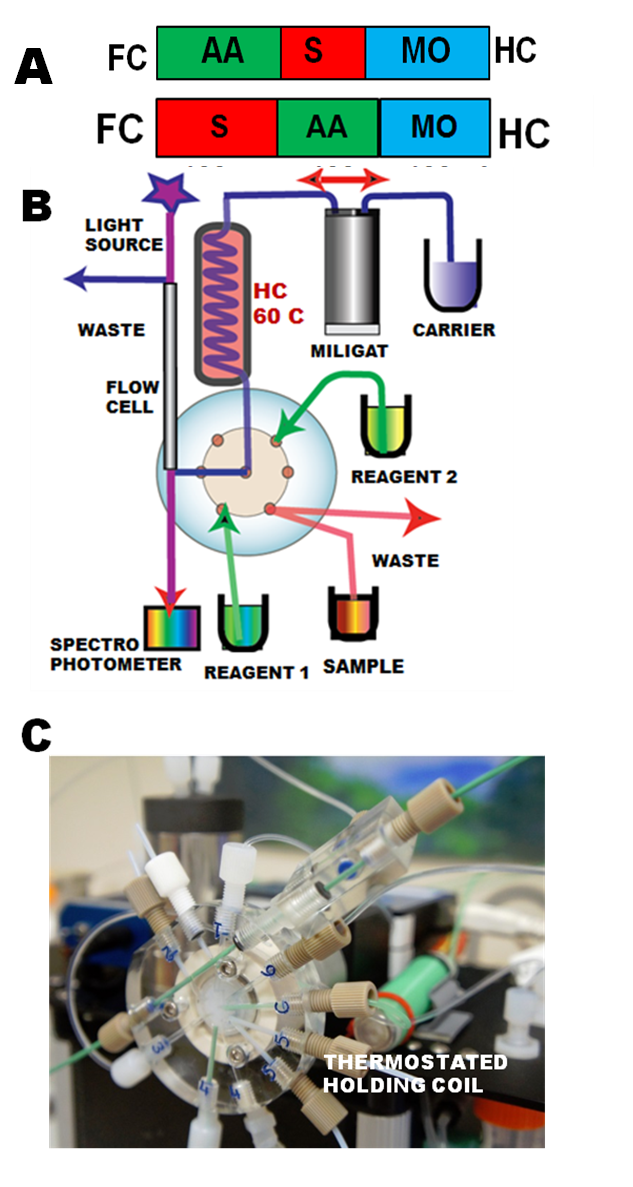For two reagent assays such as colorimetric method for phosphate, sample can be either sandwiched between reagents, or injected into reagent sequence that was assembled in the holding coil (A).
The first reaction, formation of phospho molybdate is fast, followed by slower reduction of the yellow complex by ascorbic acid, to form molybdenum blue colloid. The apparatus (B,C) used for this assay, was assembled using Miligat pump, thermo stated holding coil (2 m long, 0.8 mm I,D), six position lab-on-valve furnished with 6 cm light path Garth cell, tungsten light source and OO spectrophotometer.
While there are 345 entries in Hansen’s database, dealing with o-phosphate assays, surprisingly little is known about kinetics of this method at an elevated temperature. Therefore, reaction rate at 21 C and at 60 C was investigated first, using SHC assay protocol (next page). As expected, at a room temperature (D) it took at least 20 seconds to obtain the useful response, while equilibrium was not reached even at 80 seconds. Surprisingly, at temperature of 60 C, the useful response was reached almost instantaneously (E), a finding, that opens way to development of high throughput microSI assay for orthophosphate.
The influence of the volume of the injected sample was investigated next. As expected, the peak height increases up to 75 microliter volume (F), and then decreases as the reagent zones in sandwich configuration become separated.
Two Reagents: Phosphate Assay
PRINCIPLE
2.2.24.











